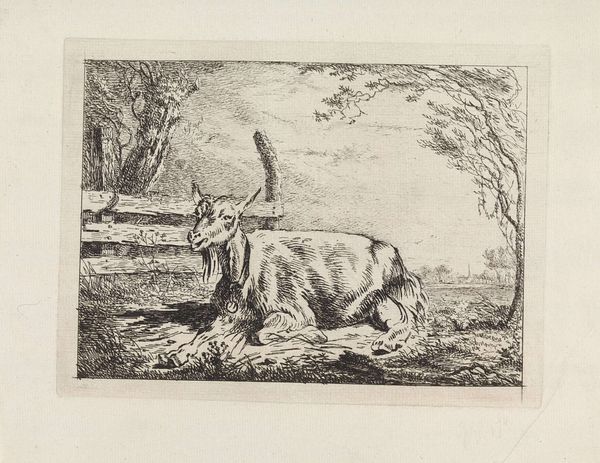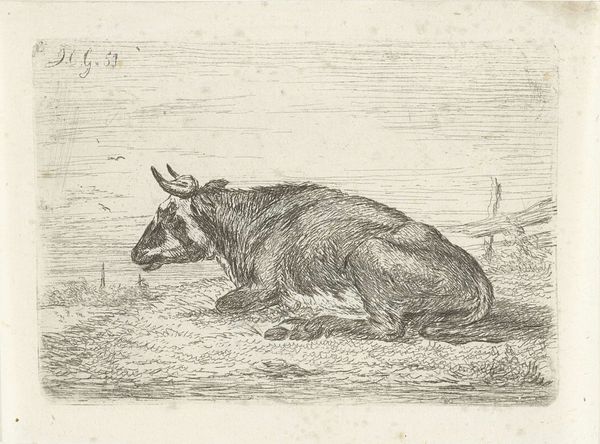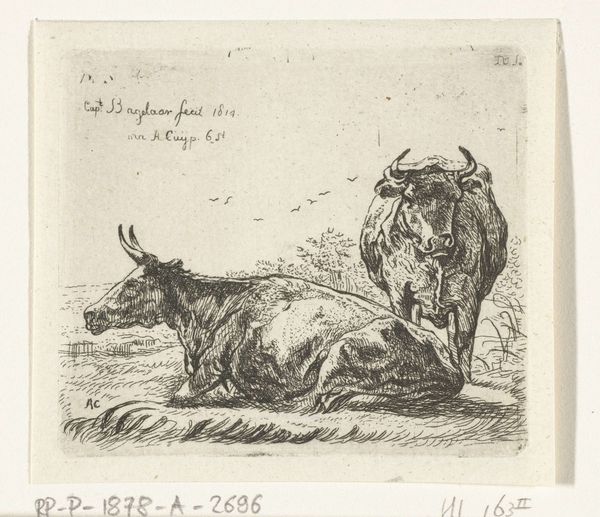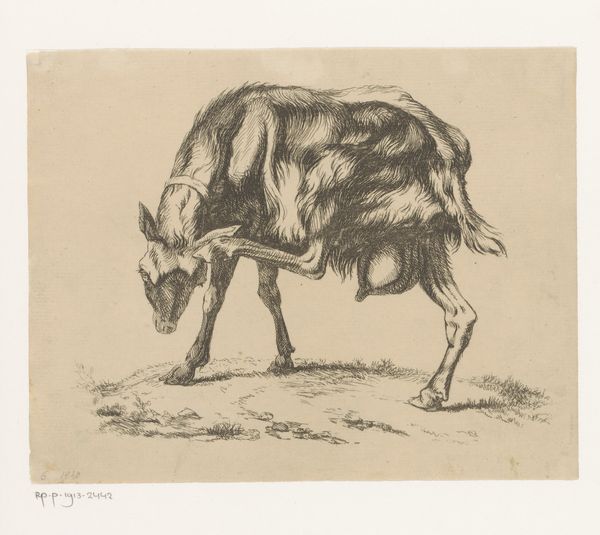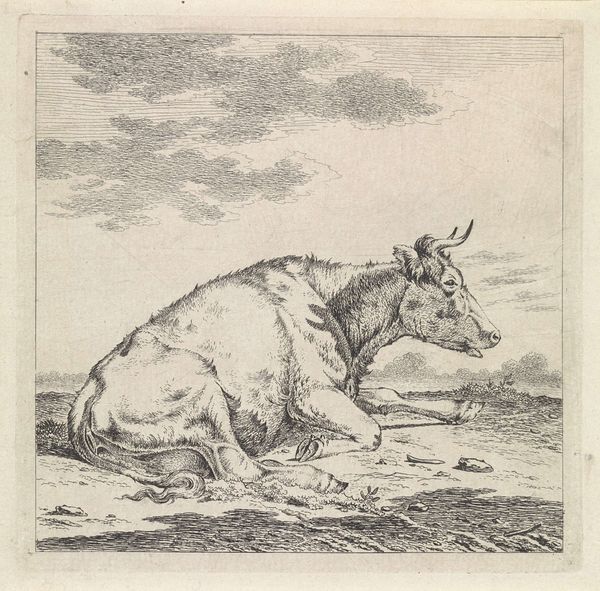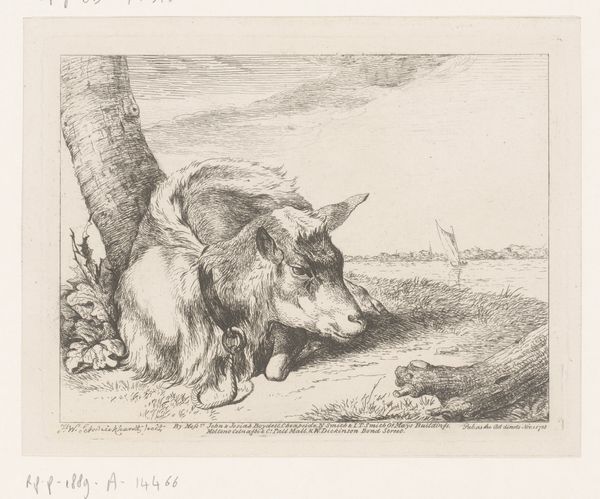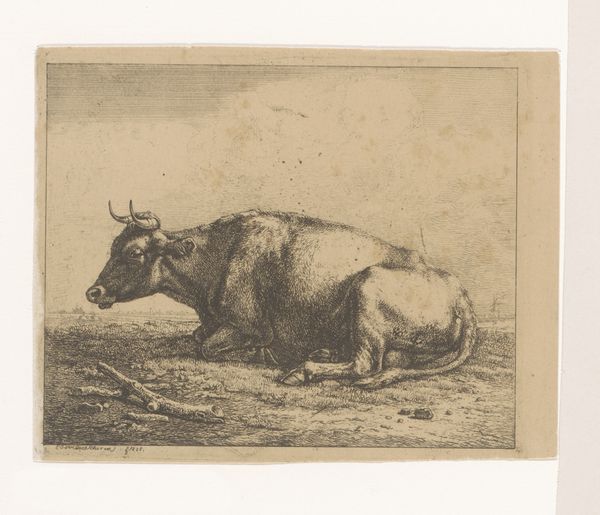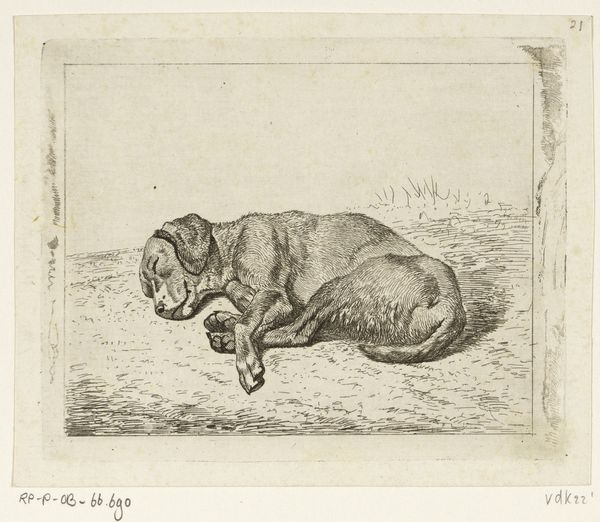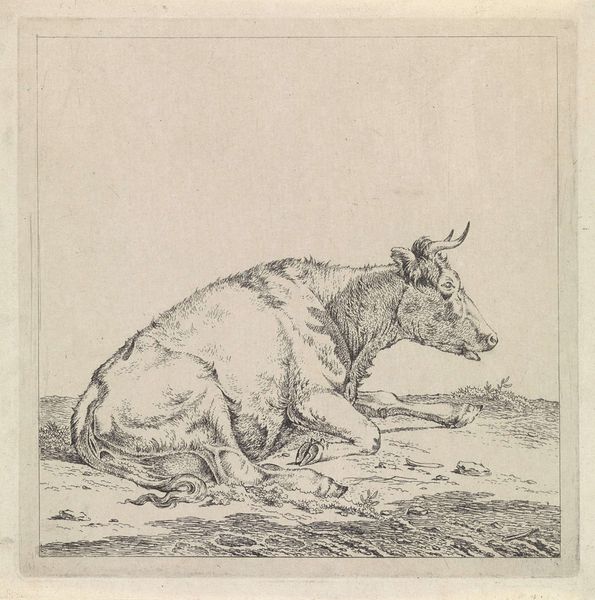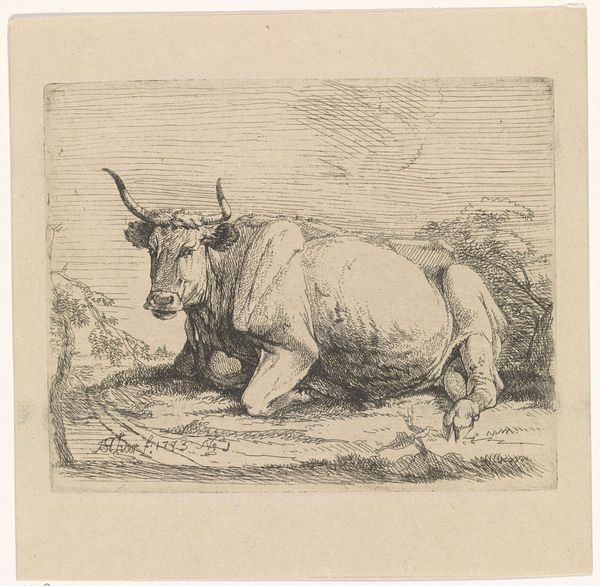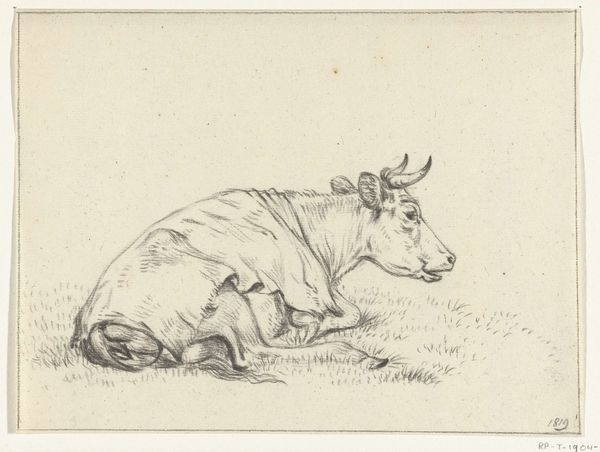
print, etching
#
animal
# print
#
etching
#
old engraving style
#
landscape
#
personal sketchbook
#
realism
Dimensions: height 90 mm, width 120 mm
Copyright: Rijks Museum: Open Domain
Curator: Jacobus Cornelis Gaal's etching, "Liggende koe," from 1851. An intriguing glimpse into the agricultural landscape of the Netherlands in the mid-19th century, wouldn't you say? Editor: I would. Immediately, there’s this sense of quiet. Almost melancholic. She's lying there, utterly still, rendered with such delicate lines it feels like a whisper on paper. Curator: The process of etching allows for precisely that delicacy. Think of the copper plate, meticulously scored and then bathed in acid to create those lines that hold the ink. It's an artisanal labor mirroring the labor of agricultural life. Editor: Exactly. I mean, look at the details in her fur. It reminds me of a winter afternoon I once spent sketching cattle huddled together in a snowy field... that smell of hay and something else entirely other, primal, bovine… Curator: It certainly speaks to Gaal's keen observation and technical skill. It's a realism deeply rooted in the physical world, one heavily reliant on manual production for its proliferation and distribution through print. We have to consider the socio-economic contexts. The etching process itself making art accessible to a wider audience than paintings did. Editor: That’s interesting, to think of the art as democratized through production, instead of being something exclusive in oils... Still, I'm drawn to the creature herself. She seems… weary. Not tragic, but certainly grounded. And the sky is just horizontal lines. Curator: Ah, yes. Consider those horizontal lines as more than just a "sky." Think of them as representing fields, horizons – the endless toil of the rural labor class. This artwork connects intimately with agrarian economies, labor distribution, and even early land management strategies within its historical moment. The skies were likely representative of industrialization too, if it weren't an immediate natural representation. Editor: A somber, yet lovely perspective, as always. For me, it remains the quiet intimacy between the artist, his subject, and, eventually, the viewer. We become privy to this bovine moment through the meticulous dance of needle and acid and ink on paper... Curator: An efficient reproductive technology for the art market meeting a unique animal study? Perhaps there's a point where appreciation bridges all readings.
Comments
No comments
Be the first to comment and join the conversation on the ultimate creative platform.
